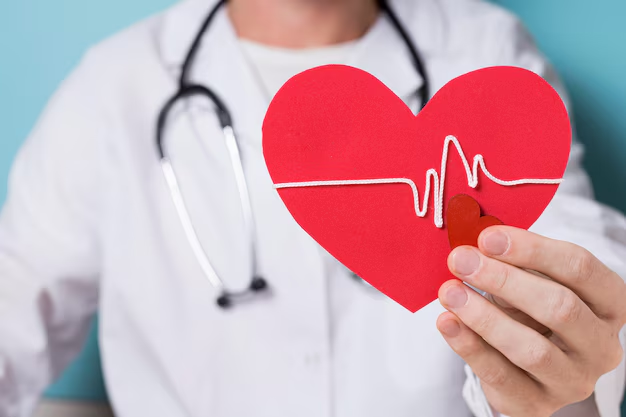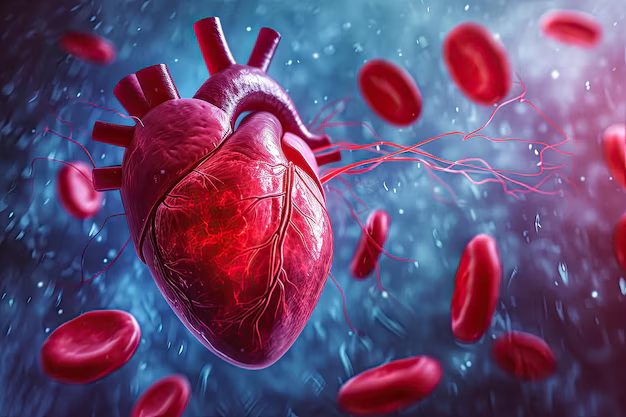What is robotic cardiac surgery?
Robotic cardiac surgery is heart surgery done through very small cuts in the chest. With the use of tiny instruments and robot-controlled tools, surgeons are able to do heart surgery in a way that is much less invasive than open-heart surgery. The procedure is sometimes called da Vinci surgery because that is the name of the manufacturer of the robot often used for this procedure.
Robotic surgeries have been used for a number of different heart-related procedures, including valve surgery, coronary artery bypass, cardiac tissue ablation, heart defect repair, and tumor removal.
In robotic surgery, an endoscopic camera is sent into the rib cage through several small incisions; The surgeon performs the surgery by controlling the robot arms on the console, accompanied by the perfect image on the console screen. You can see even the smallest details because the image is magnified 20 times. Robot arms can move better in comparison to a human hand. It is possible to make a rotation of about 540 degrees with robot arms.
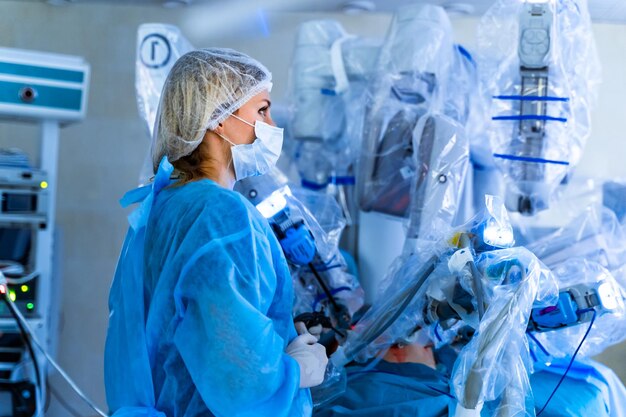

Why Patient Need Robotic Cardiac Surgery?
The main benefit of robotic cardiac surgery is that it is minimally invasive compared with open-heart surgery. Smaller incisions mean that you can heal faster and return to activities more quickly.
Your healthcare provider may recommend robotic cardiac surgery if you need an artery bypass procedure to improve blood flow to the heart. It may also be used to:
- Repair or replace stiff or leaky heart valves
- Correct atrial fibrillation, a common type of arrhythmia
- Remove a tumor in the heart
- Treat congenital heart conditions
What are the risks of robotic cardiac surgery?
First of all, the patient will be recovering faster both psychologically and physiologically. After an open surgery, where the breastbone is opened, the patient is not only affected visually, but also psychologically since he/she will remember that surgery in his/her next life. Additionally, less blood loss, less pain, shorter intensive care period and hospital stay are the other advantages thanks to the small incision. Patients will be able to get back to their normal life in 5-10 days. In fact, they are able to go home on their own after the surgery.
One of the main benefits of robotic cardiac surgery is that it has fewer risks than open-heart surgery. The surgeon does not have to cut through the breastbone to open your chest. This removes many of the complications of open-heart surgery.
Robotic cardiac surgery still requires anesthesia and, as with any kind of surgery, there are always risks involved, including:
- Heart attack
- Stroke
- Infection
- Death
Pre Robotic Cardiac Surgery
To see if you are a good candidate for this procedure, your healthcare provider will review your medical history, and lifestyle, as well as the overall severity of the disease.
- Your healthcare provider will explain the procedure and you can ask questions.
- You will be asked to sign a consent form that gives permission to do the procedure. Read the form carefully and ask questions if something is unclear.
- Along with a complete medical history, your healthcare provider(s) may do a physical exam to ensure you are in otherwise good health before you undergo the procedure. You may also have blood tests and other diagnostic tests.
- Your healthcare provider(s) may recommend taking an aspirin before the procedure.
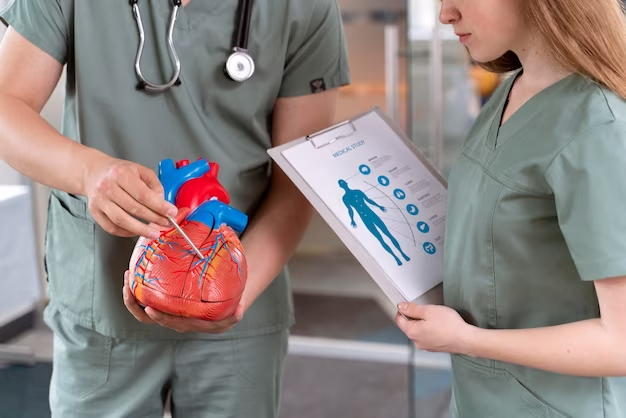
- If you are pregnant or think you may be, tell your healthcare provider(s).
- Tell your healthcare provider(s) if you are sensitive to or are allergic to any medicines, latex, iodine, tape, contrast dyes, and anesthetic agents (local or general).
- Tell your healthcare provider(s) of all medicines (prescribed and over-the-counter) and herbal supplements that you are taking.
- Tell your healthcare provider(s) if you have a history of bleeding disorders or if you are taking any anticoagulant (blood-thinning) medicines, aspirin, or other medicines that affect blood clotting. You may need to stop these medicines before the procedure.
- Tell your healthcare provider(s) if you have a pacemaker or other implanted heart device.
- If you smoke, stop smoking as soon as possible before the procedure. This will improve your chances for a successful recovery from surgery and your overall health status.
- You will be asked to fast for 8 hours before the procedure, generally stopping eating, drinking, or any oral medicines after midnight
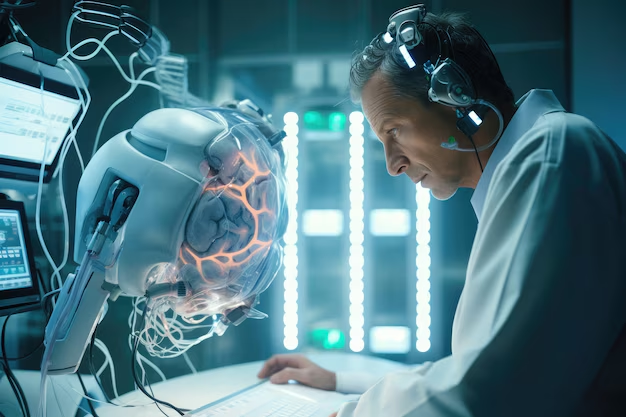
What happens during robotic cardiac surgery?
The following is the general sequence of events that will most likely occur during robotic cardiac surgery:
- You may receive a sedative before the procedure to help you relax.
- You will be placed under general anesthesia for the procedure and you will have a breathing tube.
- A surgeon will make a series of keyhole-sized incisions on the side of your chest. These incisions will align with the openings between your ribs.
- You may need to be placed on the heart-lung machine for the procedure
- Depending on the procedure being done, your surgeon will insert several precision-guided robotic arms into these incisions.
- These robotic arms hold and manipulate tiny instruments to do the required tasks on the heart or surrounding arteries.
- A tiny video camera will be inserted into another incision to provide a magnified, three-dimensional image of the operating site.
- The surgeon will control the robotic arms and camera from a console located within the operating room.
- Once complete, the surgeon will remove the instruments and close the incisions.
Post Robotic Cardiac Surgery
Once the surgery is done, you will be moved to the recovery area to be monitored. You can expect a relatively short hospital stay to follow, usually half as long as that after conventional open-heart surgery. Your healthcare provider will typically discharge you once your pain is under control, you can keep liquids down without nausea and vomiting, and your lab tests appear near normal or near your baseline before the procedure.
You can also expect less scarring on your chest. Open-heart surgery may leave a 10-inch scar on your chest. Robotic cardiac surgery just leaves a few smaller scars on the side of your chest.
After being discharged from the hospital, most people can manage their pain with over-the-counter pain relievers like acetaminophen or ibuprofen. Pain also tends to go away much faster than with open-heart procedures.

Keep your incisions clean and dry. Do not use powders, lotions, or ointments on the incision lines as this can irritate the skin and cause prolonged healing and increase the risk for infection. Do not soak the incisions in water until your doctor says it’s OK.
You may also return to normal activities more quickly than you would after open-heart surgery. Most people can resume their normal activities after a few weeks. Your healthcare provider will provide specific recommendations for activity.
Your healthcare provider will typically schedule follow-up appointments to check your progress. Be sure to tell your healthcare provider right away if any symptoms occur after the procedure, such as chest pain or discomfort. Complications are rare after robotic heart surgery, but possible, so it is important to carefully monitor for any symptoms and report them to your healthcare provider.
Remember to take all or your medicines as prescribed.
Post-Instructions For Patients of Robotic Cardiac Surgery
We don’t allow our patients to drive for at least one month. The reason is that the breastbone, which was opened and closed during the surgery, should not be damaged by any impact. However, if the patient who underwent coronary bypass with robotic surgery feels well, we do not see any problem for the patient to drive after the 10th day and to get back to the physical activities they have been doing before the surgery. You certainly do not have the chance to perform robotic surgery for every patient. For instance, if the patient has a highly common vascular disease in the bypass, it is not that advantageous to perform robotic surgery. The first criterion in patient preference is obtaining the same quality results as open surgery in robotic surgery. The patients whose 4 or 5 vessels need to be intervened simultaneously, are those with a previous lung disease and adhesions in the cavity of the lung, adhesions in the pericardium, and those who are not suitable for robotic surgery.

